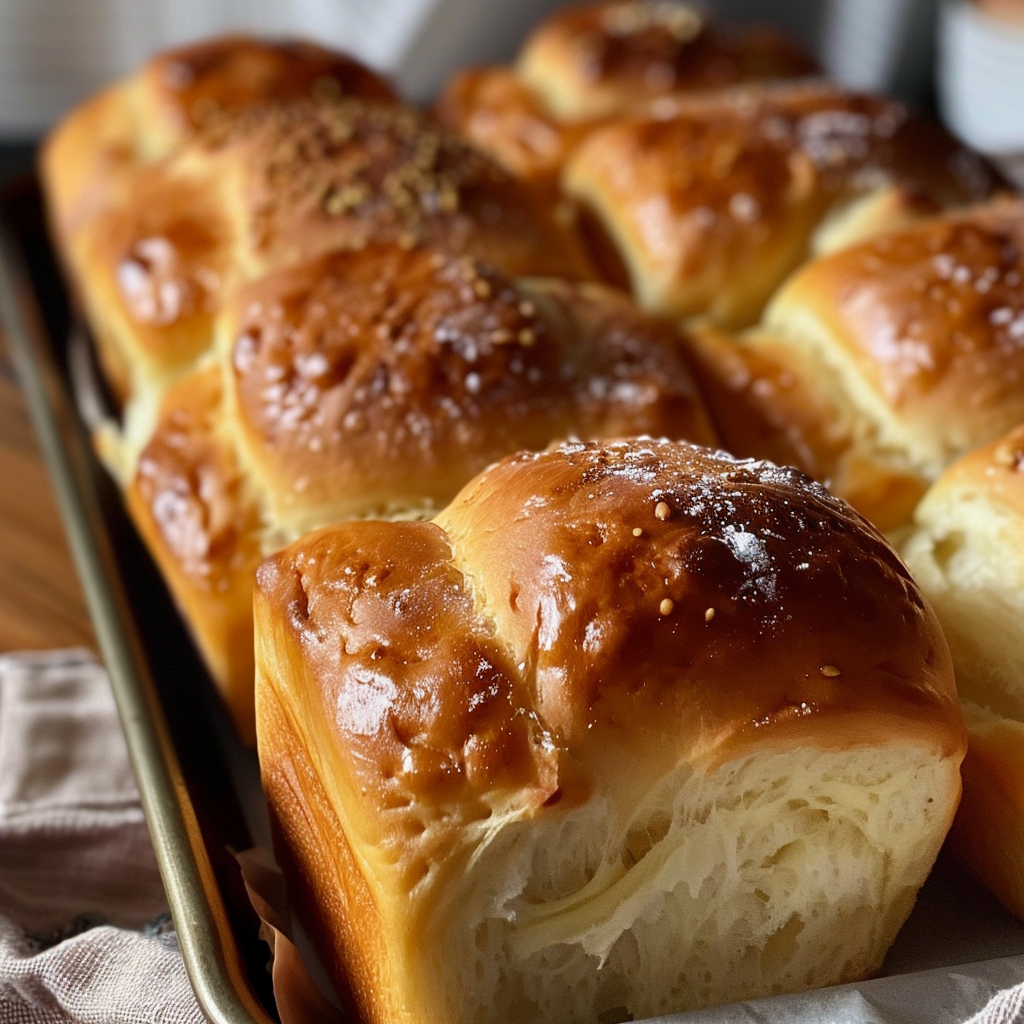Milk brioche rolls are a delightful treat that combine the rich flavors of milk with the soft texture of brioche. Perfect for breakfast, brunch, or a tasty snack, these rolls are sure to become a favorite in your household. With simple ingredients and easy-to-follow instructions, you can whip up a batch of these delicious rolls in no time.
Ingredients:
- 4 cups all-purpose flour
- 2 eggs, at room temperature
- 1 cup whole milk, heated to about 110 degrees Fahrenheit
Directions:
- In a large mixing bowl, combine the all-purpose flour and make a well in the center.
- Crack the eggs into the well and pour in the warmed whole milk.
- Gradually incorporate the flour into the wet ingredients until a dough forms.
- Knead the dough on a floured surface for about 10 minutes or until it becomes smooth and elastic.
- Place the dough in a lightly oiled bowl, cover it with a damp cloth, and let it rise in a warm place until it doubles in size.
- Preheat your oven to 375 degrees Fahrenheit (190 degrees Celsius).
- Punch down the risen dough and divide it into equal portions to form rolls.
- Place the rolls on a baking sheet, leaving some space between each.
- Let the rolls rise again for about 20-30 minutes until they puff up.
- Bake in the preheated oven for 15-20 minutes or until the rolls are golden brown.
- Allow the brioche rolls to cool on a wire rack before serving.
Tips:
- Ensure that the milk is warmed to about 110 degrees Fahrenheit to activate the yeast without killing it.
- Knead the dough until it becomes smooth and elastic to develop the gluten, which gives the rolls their soft texture.
- Letting the dough rise in a warm place helps to activate the yeast and allows the dough to double in size.
- Leave enough space between the rolls on the baking sheet to allow for expansion during baking.
Conclusion:
These milk brioche rolls are a wonderful addition to any meal or as a standalone snack. With their fluffy texture and delicious flavor, they are sure to be a hit with family and friends. Enjoy these rolls warm out of the oven or toasted with your favorite spread. Thank you for trying out this recipe, and I hope you enjoy every bite!
- Can I use a different type of flour for this recipe?
While all-purpose flour is commonly used for making brioche rolls, you can experiment with other types of flour to achieve different textures and flavors. For example, bread flour can result in a slightly chewier texture, while pastry flour can make the rolls more delicate. Keep in mind that different flours may require adjustments in liquid content or kneading time to achieve the desired consistency. - What is the purpose of warming the milk in this recipe?
Warming the milk serves multiple purposes in this recipe. Firstly, it helps activate the yeast, which is essential for the rising process and the development of the dough’s structure. Yeast thrives in a warm environment, and heating the milk to around 110 degrees Fahrenheit provides the ideal conditions for yeast activation. Additionally, warm milk also helps to create a more tender crumb in the final product, contributing to the soft and fluffy texture of the brioche rolls. - How can I tell when the dough has risen enough during the proofing process?
Proper proofing is crucial for achieving light and airy brioche rolls. The dough should roughly double in size during the proofing process, which typically takes around 1 to 2 hours, depending on factors such as ambient temperature and yeast activity. To check if the dough has risen enough, gently press your finger into the dough. If the indentation remains and does not spring back, the dough is ready to be punched down and shaped into rolls. Be careful not to overproof the dough, as this can result in a dense and overly yeasty texture. - Can I freeze the brioche rolls for later use?
Yes, you can freeze the brioche rolls for future enjoyment. Once the rolls have cooled completely, wrap them tightly in plastic wrap or aluminum foil to prevent freezer burn and moisture loss. Place the wrapped rolls in a freezer-safe container or resealable plastic bag, removing as much air as possible before sealing. Brioche rolls can be stored in the freezer for up to 2-3 months. To reheat frozen rolls, allow them to thaw at room temperature for a few hours, then warm them in a preheated oven or toaster oven until heated through. Enjoy the rolls warm or toasted with your favorite spreads or fillings.

